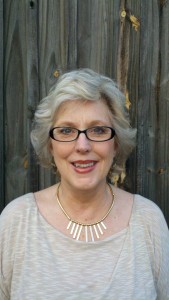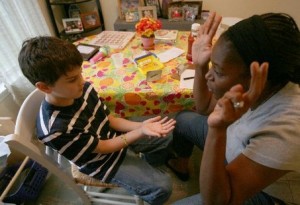An Interview with Deborah Luetkenhoelter, MA,CCC-SLP
Deborah Luetkenhoelter is a certified speech-language pathologist (SLP) who specializes in working with children and adults with autism spectrum disorder (ASD). Deborah works with schools and families in a collaborative environment to address communication needs. Today, she’s sharing her expert knowledge regarding the challenges that autistic children frequently encounter, as well as some of the evaluation measures that she uses in her practice. Deborah emphasizes that it is critical to improve communication, whether verbal or nonverbal, in children with autism in order to reduce inappropriate behaviors.
How long have you offered autism consulting services as a speech-language pathologist?
I have worked with children and adults on the autism spectrum since post graduate work in Oregon in the mid 1980’s – so that’s about 28 years!
What are some of the speech difficulties you encounter in autistic children?
The primary difficulties include the inability to understand the nuances and abstractions that are so often used in language, as well as an inability to talk about abstract concepts, concepts of the future, concepts related to problem-solving and the deficit of social language. About 70% of kids on the autism spectrum are non-verbal or very limited in verbalizations. At this level, I am most concerned about developing purposeful communication using gestures and referencing the communication partner.
How do you go about an initial assessment for an autistic child?
As an SLP/behavioral consultant it is not my job to identify or label a child autistic. That is usually done by a neuropsychologist or physician. In most states, autism is a medical diagnosis. However, I do evaluate behaviors and speech and language levels. It is a true statement that behavior is communication. Our students on the autism spectrum are bombarded by auditory input – our speech, movement, or even uncomfortable tags on clothes – and yet they can’t or don’t know how to verbally express confusion or distress. The behavior (often perceived as negative) becomes that communication.
I will assess behaviors (which help me understand communication needs), through parent interviews, Functional behavioral Assessment, Social skills inventory, and observation of the child in his/her primary environments. My communication assessment is not necessarily composed of standardized Speech and Language Tests, but usually consists of observation, video review, the use of developmental scales, interviews, and a Form and Function Analysis (which helps me to determine the communication forms and functions he/she is currently using). Goals are established based on functional communication needs, on giving the child or adult successful, more conventional means of sharing needs or wants with significant others in his environment. When he/she has more success in requesting clarification, in understanding what’s expected, in getting concrete information (visual supports) in performing a task, behaviors reduce. They just do!
What are some speech therapy treatments that you use with autistic children?
I use an eclectic approach. I often establish a connection with a child in order to enter his world by using Imitative Therapy. This is similar to Floortime. I match the child’s actions upon a toy or the environment by copying his movements. I use play therapy similar to verbal behavior, in a functional setting. I also often use video teaching.
You help children use AAC devices. How do you encourage vocalization in children who use AAC devices?
I always use the word in context, repeat the word and often help the child to say the same word. Since the purpose of a speech output device is to give the child without speech a way to develop and to use vocabulary in real communication, I would not interfere with use of the device to just teach a spoken response. The development of language is primary. I have found that using an AAC device often helps children with limited speech begin to use spoken speech as the spoken model is in front of them all the time.
What advice can you offer parents who do speech therapy activities at home with their children?
Be clear, use the child’s interest, and keep it functional. Give choices rather than ‘yes/no’ questions. E.g. “Milk or juice?” Next time switch it, “Juice or milk?” Hold the items in front of you, near your face as you say the words. If the child asks for milk but you know he hates milk, give him what he asked for. It will give him/her the opportunity to protest and to make a new choice.
Are there any specific activities that are particularly helpful for children with autism?
The first thing I do for children with autism is to find out what they need from me in order to have more success. If the environment is too confusing, too cluttered, too much information, I address changing the environment first. I use picture schedules, choice cards, and task analysis. Activities that involve clear choices, taking turns, and using visual materials are all helpful in working with children with autism.
Thank you very much, Deborah, for sharing your expert knowledge with parents of autistic children!




